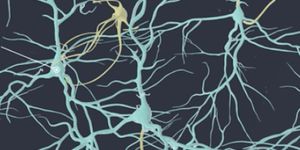New Technology Combines Biomedical Imaging Systems
 Researchers at Purdue University are currently developing a novel biomedical imaging system that will combine optical and ultrasound technology that will someday improve diagnosis of life-threatening diseases.
Researchers at Purdue University are currently developing a novel biomedical imaging system that will combine optical and ultrasound technology that will someday improve diagnosis of life-threatening diseases.
A noninvasive technique, photoacoustic tomography works by transforming absorbed optical energy into the acoustic signal. Pulsed light is sent through the body tissue by creating a small rise in temperature that leads to expanding tissue to expand creating an acoustic response that can be identified by an ultrasound transducer. "The nice thing about photoacoustic tomography is the compositional information," says Craig Goergen, an assistant professor in Purdue's Weldon School of Biomedical Engineering. "It provides information about where blood and lipid are located, along with other essential information." Overall, the ultrasound data is used to visualize the tissue where the ultimate purpose is to enhance the clinical care of patients.
Results of the research study, published in the journal Photoacoustics, have described an adjustable photoacoustic probe with “improved light delivery and image quality”. The technology provides “real-time compositional information of body tissue without the need for contrast agents”.
Photoacoustic tomography is able to identify a myriad of diseases especially those that Centers for Disease Control and Prevention (CDC) names the “most common, costly, and preventable of all health problems” such as cardiovascular disease, diabetes, and cancer. "That means there will be a great need for medical imaging. Trying to diagnose these diseases at an earlier time can lead to improved patient care," Goergen said. "We are in the process now of trying to use this enhanced imaging approach to a variety of different applications to see what it can be used for."
Photoacoustic Tomography has multiple other potential uses such as the “mapping of lipid deposition within an arterial wall” which may lead to other health problems “measuring cardiac tissue damage and tumor biopsies”. “Using photoacoustic tomography for intraoperative tumor biopsies could help surgeons make sure they remove all cancer from a patient”, explains Goergen.
Researchers were hopeful in creating optical manipulation techniques can provide a solution by maximizing photon density. Such motivation has allowed researchers to create “motorized photoacoustic holder” that can allow users to maneuver easily with the purpose of aiming the device and tuning the depth where light has focused the aim of the device and tune the depth where light is focused; improving the penetration depth of light and signal-to-noise ratio.
Watch this video below to learn more about photoacoustic tomography:
Source: Purdue University








